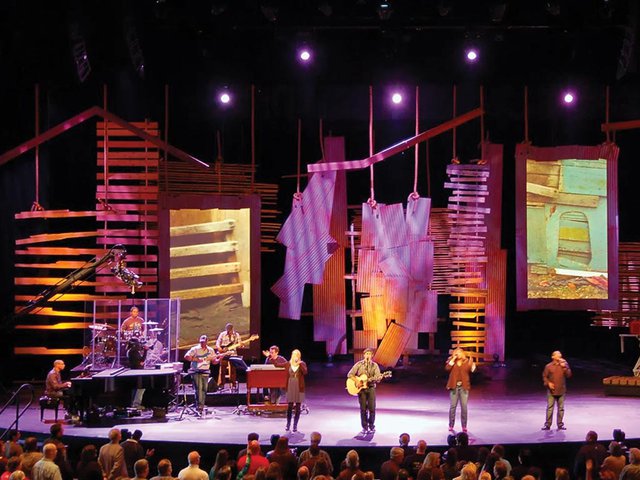Community, Leadership, Experimentation, Diversity, & Education
Pittsburgh Arts, Regional Theatre, New Work, Producing, Copyright, Labor Unions,
New Products, Coping Skills, J-O-Bs...
Theatre industry news, University & School of Drama Announcements, plus occasional course support for
Carnegie Mellon School of Drama Faculty, Staff, Students, and Alumni.
CMU School of Drama
Tuesday, March 27, 2018
A Change of Scenery: Staging, Rigging & Set Design
Church Production Magazine: As one attempts to unravel staging and set design practices, several questions become apparent: what is good design? Who should be the final authority on an effective stage design? What elements play into the success from both an aesthetic and functional standpoint? What processes should be in place for a design regardless of size or scope?
Subscribe to:
Post Comments (Atom)

2 comments:
Mega churches is another genre that I was never sure I would get into, but there are more and more churches are doing more with less money. But if even with these smaller budgets, they are still requiring skilled technicians. This opens up a great way to get to work on with high entertainment tech. While I am not sure how much money you can make working these shows as an operator. From my memory of going to church is that they try to find volunteers to help. And while I think mega church can be a great place to learn about the technology but not to make a living off of. However being a designer for these mega churched is a different story. I think that is were the church is willing to spend the money. I think this article makes it clear why. And for good reason. I was surprise that scenic design is becoming more popular. Before now, I had only seen lighting designers, and more video designer are showing up too.
I was really surprised by how big a role churches played in this article, because I don’t expect churches to have scenic elements. However, it makes sense when considering the size and scale of the church. But also because churches produce every week, I like the idea of designing for variety because it's so different from how I normally think of design. I have always thought of set design as for a specific productions, in many plays and musicals one design could never replace another. But in churches its a totally different process. I think this article was written to help non theatrical settings add set design. While some of the advice is helpful for theater, theater usually has a lot of the mechanisms built in whereas other industries may not. Even though the advice was a litting generic, I liked hearing from different types of designers and about non theater applications.
Post a Comment